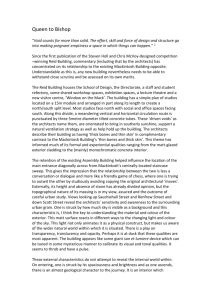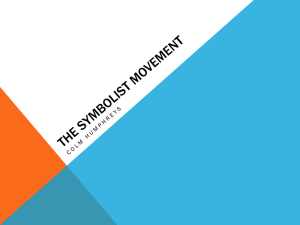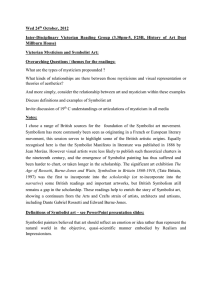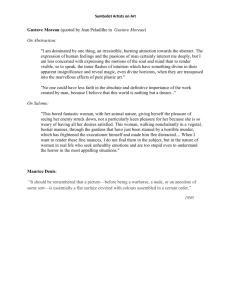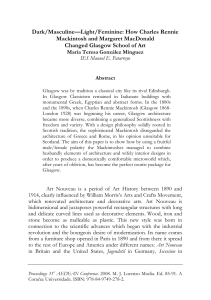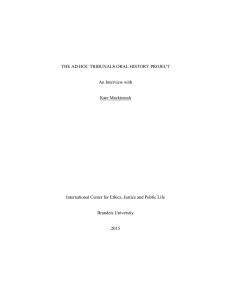Victorian Mysticism and Symbolist Art Victorian Culture Inter-Disciplinary Reading Group 3.30-5pm, Wed 24
advertisement
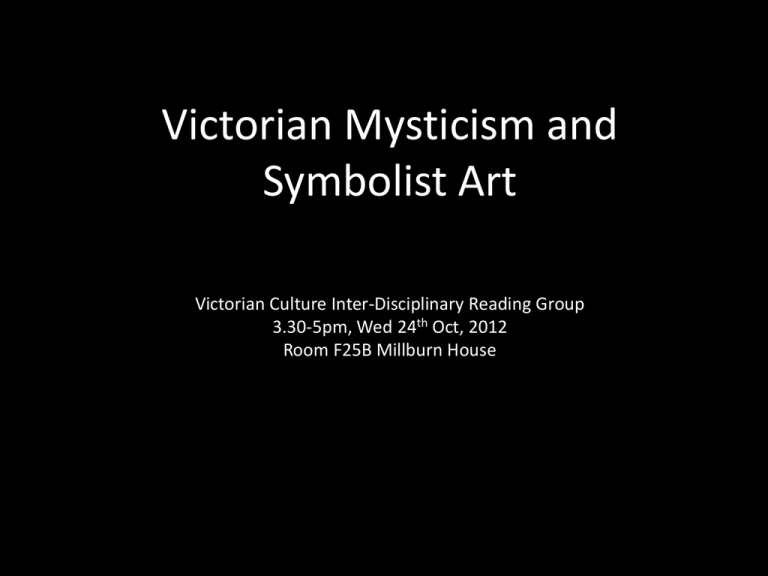
Victorian Mysticism and Symbolist Art Victorian Culture Inter-Disciplinary Reading Group 3.30-5pm, Wed 24th Oct, 2012 Room F25B Millburn House Symbolist Art •authorial intention •Relationship with mystical ideas in circulation at the time and often membership of occult groups •aesthetic qualities Symbolist Art •authorial intention – desire to represent ideas, ideals, ‘suggestive’, ‘associative matter’, the unconscious (dreams being just one aspect of this). Crucially concerned with a visual language for ideas -Relationship with mystical ideas in circulation at the time and often membership of occult groups •aesthetic qualities – unconventional pictorial practises, manipulation of colour, form, composition, subject – creation of an unreality? No single coherent aesthetic however. Unified by the rejection of realism as a starting point. Broad movement in different media (eg furniture, interior design as well as painting) Dante Gabriel Rossetti, Beata Beatrix, c.1864-70, Tate Britain Lady Lillith, 1866-8, altered 1872-3, Delaware Art Museum, Wilmington, DE Arthur Heygate Mackmurdo (1851–1942), for the Century Guild, Chair, ca. 1882, mahogany, leather, painted decoration. The Huntington Library, Art Collections, and Botanical Gardens and the Los Angeles County Museum of Art. Burne-Jones, King Cophetua and the Beggar Maid, 1884, Tate Britain Charles Rennie Mackintosh, Chair, for 'The Rose Boudoir', International Exhibition of Modern Decorative Art, Turin 1902 Hunterian Art Gallery Mackintosh collections, catalogue number GLAHA 41213 'The rooms were like dreams...verticals everywhere...there was hardly anything in [them] except...two straight chairs, with backs as tall as a man, stood on a white carpet looking at each other over a slender table, silently like ghosts’ 'the position of the moulding, floating behind the sitter's head, helps us to understand why some of Mackintosh's chairs have been seen as ghosts or creatures, staring at us ...It is not exactly that these chairs are like people; but they are in a state of preparedness, waiting for people to sit in them. Until then, they are like ghosts.' The White Rose and the Red Rose, by Margaret Macdonald Mackintosh – Detail(1902) Note: Muthesius cites C.R. Mackintosh as the clear leader of the Glasgow movement, which Mackintosh himself disputes, giving credit for artistic genius to his wife Margaret MacDonald Mackintosh These two slides show some other well-known European Symbolist artworks (note the variety in artistic subject and form) Fernand Khnopff, I lock the door upon myself, 1891 Jean Delville, Portrait of Mrs Stuart Merrill, 1892 Edvard Munch, The Scream, 1893, Munch Museum, National Gallery, Oslo
